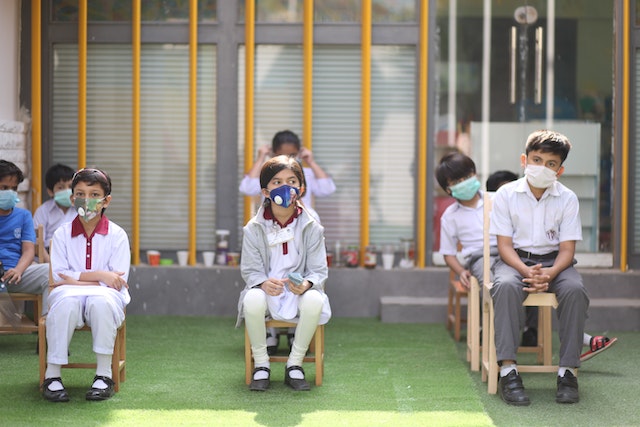Read the detailed description of Quest's Program Details!
As someone who specializes in building kids’ social skills the idea of how to help kids in this area and how to do this well is on my mind now more than ever given that we are currently in a time of social distancing. With COVID-19 there are many concerns related to socializing for children with social difficulties as this area is hard enough for children with social issues without compounding the issue with removing opportunities for prosocial engagement for children who struggle socially. These challenges can include:
- Children have less opportunities to practice social skills—While this is true for all children lately, the gap in social learning is typically more dramatic for children who have difficulties naturally learning social cues and skills. Children who don’t naturally pick up these skills need hand crafted opportunities to build skills in these areas and multiple repetitions to generalize the skills that other children often learn effortlessly. This can be stressful and anxiety producing for parents who worry about the best ways for children to continue this social practice In times when children are spending months at home away from peers. This can be further complicated because often children with social difficulties have a harder time making friends and then a more challenging time keeping the friendships that they have made so even reaching out virtually or maintaining those fragile connections can be more trying and difficult for kids without a lot of support and supervision.
- Social opportunities have a different context and expectations than they did prior to March—Right now quite simply the social rules or expectations are different in many situations. This isn’t just a difficulty and challenge for children. This is a large-scale macrosystemic issue that is impacting all of us as we try to decide how to best negotiate the changing standards, rules and how that fits with our own values and beliefs. This has been incredibly complex for adults, so it isn’t surprising that this would impact children socially on a systems level.
So, given all of this what can we do to support children who didn’t just need regular levels of social support, but extra teaching and learning opportunities in social areas to learn in a variety of areas? This is an important question as areas of growth for learning often include:
- Reciprocal conversations
- Switching topics
- Perspective taking and Empathy
- Cognitive flexibility
- Emotion regulation
- Understanding social cues
- Controlling impulses
I believe that the answer will be unique and varied as all of our kids are unique and varied in their specific needs and areas of growth. It will be important to find ways to do the things that we know have worked in the past and come from the research of sound interventions, but now we may have to be flexible and creative to employ these interventions in new ways to meet our kids needs. For example: we know that strategies such as utilizing a child’s strengths in one area can help them build skills in another, developing individualized goals, utilizing reinforcement strategies, as well as engaging in front loading, visuals and shaping behaviors can all be effective for teaching new skills. It might be helpful to examine how you can use some of these type of strategies or other specific things that have often helped your child do well and build skills to learn, despite having some new environments or social expectations.
The challenge becomes how can we use the environments we do still have or more fully access other environments more fully to teach.
- Use the home and environments currently in use to build in more lessons in areas of need for your child—The home and daily environments your child is in remain wonderfully rich teaching environments for social interactions. Take time to re-evaluate your opportunities for social engagement. This could be with the family that you live with or others you might still be interacting with (all be it on a very different basis).
-How can you use the opportunities your child has for connection currently to target the areas listed above that might be areas of need for your child such as reciprocal conversations, cognitive flexibility, understanding social cues, controlling impulses, etc.?
(Every single one of these areas listed above plus more can be addressed in the home environment. In addition, the coronavirus has created a unique learning opportunity to learn about ourselves in relation to others in a different way. How can you use this as an experiential learning opportunity with your child?
- Create engaging, hands-on interactive lessons through new mediums. This could be virtual forums, creative lessons that involve social distancing, books, psychoeducation, etc.—Speaking as someone who has spent two months rethinking our entire format for teaching social skills I can tell you that the possibilities are endless in this area! Kids learning has always come down to the knowledge that when you can create fun and engagement and then after build in key lessons kids learning skyrockets since kids (and adults) learn more through hands-on, interactive experience. For example: a Lego is never just a Lego unless you let it be. To me a Lego is a chance for creativity, a time to engage socially, an opportunity for teamwork and collaboration, a time for communication and storytelling, a chance to problem solve, and an opportunity for high levels of flexibility among other things—this is as true for virtual connection with peers as it has ever been in person so get creative!
-What options and opportunities do you have to help your child connect to a positive peer?
-How can you facilitate this?
-What needs to happen to set this social interaction or virtual play time up for success?
If your child struggles to initiate play with others, just as before you would have setup a play date you now may need to be the one to set up a virtual play date with a positive peer or a trusted family member such as a cousin. I recommend thinking about how closely you should be involved.
-Do you just need to be in the room or should you and the other parent potentially be more involved to set the stage for success?
-Is there a way that you could offer suggestions or set your child up to play a video game with a friend?
As always, front loading for appropriate play with a friend could be helpful such as how to appropriately take turns, pick games, switch off turns, show positive sportsmanship, etc. If you chose to stream a video for your child and their friend to have a virtual movie night you might front load related to appropriate use of talking during the movie, use of the chat function, how to stay in front of their camera versus just walking away without saying something. Many of the online skills for prosocial online engagement or online social cues are similar to things kids would need to do in-person to be successful so you can work to set them up for success in similar ways.
- Use videos and role modeling—There is so much at our disposal that our kids are already engaged in that we can use to teach social skills. When you can take time to sit with them to see the videos, shows or clips that they are watching it is possible to ask questions and get clarification to help them better understand the social context of the characters that they love. It can be a fun game to freeze your child’s screen and give bonuses for how often they can say what the characters on screen are thinking, feeling, and what is likely to happen next. You can expand this as well to ask more questions such as, “Do you think they would feel differently if they had asked permission first?” “Do you think this would have gone differently for character X if they had been at school versus the beach?” etc. It is also really important to be able to role model certain skills for children and to practice. This process may look different for kids based on their different needs, but can be really helpful for kids’ growth.
The biggest thing I will say is to take heart. As we have talked about in previous newsletters this is a time of great change. The more you can take care to manage your own stress and practice solid self-care and make this a family value and focus other areas will materialize as well. My kids have always made progress in their social goals—this happens over time. It is a process and is more like a marathon than a sprint. Be positive during the process focused on the specific goal for the time being and good things will happen. That is as true today as it has ever been. Though the method of instruction and types of interaction may adjust, the big picture can remain.

